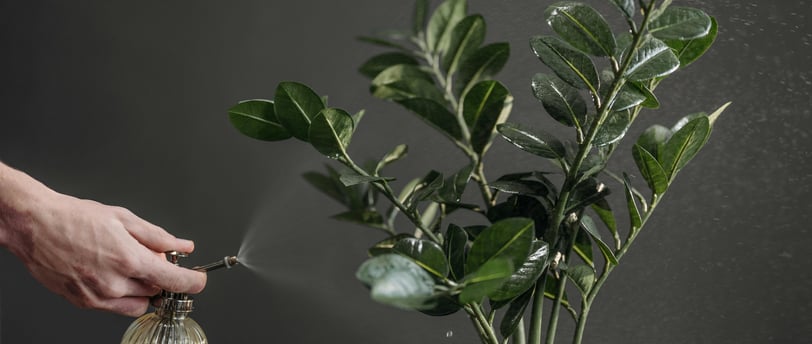ZZ Plant Care Guide: The Ultimate Guide to Growing a Thriving ZZ Plant
The ZZ plant is a resilient and attractive houseplant that brings a touch of greenery to any indoor space. With minimal light and watering needs, it’s a fantastic choice for beginners and busy plant owners alike. Follow these tips to keep your ZZ plant healthy, and you’ll enjoy its lush, green foliage for years to come.
BeginnerPlants
11/3/20243 min read


The ZZ plant, also known as Zamioculcas zamiifolia, has quickly become a favorite in the world of indoor plants. Known for its hardy nature and glossy, dark green leaves, the ZZ plant is perfect for beginners and seasoned plant lovers alike. In this guide, we’ll walk through everything you need to know about caring for a ZZ plant, including lighting, watering, repotting, and common questions about its care.
What Is a ZZ Plant?
The ZZ plant, native to Eastern Africa, is a low-maintenance houseplant that can survive in low light and with minimal watering. Its resilience makes it an ideal choice for people who want beautiful greenery without the hassle.
ZZ Plant Care Overview
Scientific Name: Zamioculcas zamiifolia
Common Names: ZZ plant, Zanzibar Gem
Light Requirements: Low to bright, indirect light
Watering Needs: Low; drought-tolerant
Soil Type: Well-draining potting mix
Toxicity: Toxic to pets and humans if ingested
How to Care for a ZZ Plant
1. Light Requirements for a ZZ Plant
The ZZ plant thrives in a variety of light conditions, making it ideal for apartments, offices, or homes with limited natural light. Here’s how to find the perfect light for your ZZ plant:
• Low to Medium Light: ZZ plants can grow well in low-light conditions, though their growth may slow down. Avoid placing the plant in direct sunlight, as it can burn the leaves.
• Bright, Indirect Light: For optimal growth, place the ZZ plant in bright, indirect light. East- or north-facing windows are excellent options.
2. Watering ZZ Plants
Overwatering is one of the most common mistakes when caring for a ZZ plant. These plants are drought-tolerant and prefer to dry out between waterings.
• Watering Frequency: Water your ZZ plant once every two to three weeks, or when the soil is completely dry.
• Signs of Overwatering: Yellowing leaves, soft stems, or a foul smell from the soil can indicate overwatering.
3. Soil Requirements for ZZ Plants
A well-draining potting mix is essential for ZZ plants. Choose a mix designed for succulents or add perlite to a standard potting soil to improve drainage.
• Pot Selection: Use a pot with drainage holes to prevent water from sitting at the bottom, which can lead to root rot.
4. Humidity and Temperature
The ZZ plant does well in typical indoor temperatures and humidity levels. It’s not particularly picky about humidity, making it great for various climates.
• Temperature: Aim for temperatures between 65°F and 75°F.
• Humidity: ZZ plants tolerate low humidity but appreciate occasional misting in very dry environments.
5. Fertilizing Your ZZ Plant
While the ZZ plant doesn’t require frequent fertilizing, feeding it every two to three months during the growing season (spring and summer) can encourage healthy growth.
• Recommended Fertilizer: Use a balanced, water-soluble fertilizer diluted to half-strength.
Common ZZ Plant Problems and Solutions
1. Yellowing Leaves
Cause: Overwatering is often the culprit when ZZ plant leaves turn yellow. Check the soil and ensure it’s dry before the next watering.
2. Wrinkled Stems
Cause: Wrinkled stems usually indicate underwatering. Water the plant and monitor it to ensure it remains hydrated.
3. Root Rot
Cause: Root rot occurs when the ZZ plant is left sitting in water. Ensure your pot has drainage holes and avoid watering until the soil is dry.
ZZ Plant FAQs
Is the ZZ Plant Toxic to Pets?
Yes, the ZZ plant contains calcium oxalate, which is toxic if ingested by pets or humans. Keep it out of reach of pets and small children.
How Often Should I Repot My ZZ Plant?
Repot your ZZ plant every two to three years or when it becomes root-bound. Spring is the best time for repotting.
Can ZZ Plants Grow in Low Light?
Yes, ZZ plants are one of the few indoor plants that can thrive in low light, making them ideal for offices and rooms with limited natural light.
BeginnerPlants
Your guide to indoor and outdoor plant care.
© 2024. All rights reserved.
